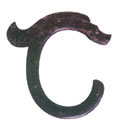| Tools: Save | Print | E-mail | Most Read |
| The Hongshan Culture |
| Adjust font size: |
Hongshan Culture is characterized primarily by the ancient painted potteries, the "Z"-stripped potteries and the unique digging tools-stone spades and laurel leave-shaped two-holed stone knives. The potteries of Hongshan Culture fall into two types-clay potteries and sand-mixed potteries, both manually made. The clay potteries are mostly red, usually in the forms of bowl, basin, jar and pots, etc., most of which are containers with small flat bottoms. Most of the clay potteries are decorated with black or purple stripes arranged mainly in parallel lines, triangles, scale-shaped patterns and occasionally in "Z"-shaped pressed stripes.
Within the area of Hongshan Culture, bones of oxen, lambs, pigs, deer and river deer have been unearthed, though in small numbers. The oxen, lambs and pigs, which are presumably domestic animals, vaguely indicate that the early inhabitants of Hongshan Culture lived a settled life supplemented by animal husbandry, fishery and hunting. More than 20 cirrus-shaped jade articles have been unearthed at the site of Hongshan Culture, and each of them represents two fundamental themes-cirrus-shaped angles and minor convexities. Combination of cirrus-shaped angles and minor convexities in different ways constitute the various patterns and designs of the cirrus-shaped jade articles of Hongshan Culture, which is best demonstrated by the enormous blackish green jade dragon unearthed at Sanxingtala Township of Wengniute Banner in 1971. The dragon is 26 cm in height with the head of a swine and the body of a serpent, coiling like cirrus. Similar dragons were found later in Balin Right Banner and the Antiques Store of Liaoning Province. These cirrus-shaped jade articles can be classified into four types by analyzing their patterns and designs: decorative articles, tools, animals and special ones, of which the hoop-shaped articles are among the typical pieces of the jade ware of Hongshan Culture. The association of the shapes of these jade articles with their cultural context indicates that the special articles and the tools were made to meet the needs of religious ceremonies. The discovery of cirrus-shaped jade dragon at Hongshan Culture strongly suggests From the 1980s, religious relics of Hongshan Culture like the " In the first place, archeological studies show that Hongshan Culture was developed on the basis of Xinglongwa Culture and Zhaobaogou Culture, and the inheritance and development in religious traditions between the three cultures are evident. No sites devoted exclusively to sacrificial rites have been found so far in Xinglongwa Culture and Zhaobaogou Culture. The discovery of Niulianghe Relics in the 1970s indicates that large-scaled centers for sacrificial rites had shown up by the end of Hongshan Culture. This is not only a breakthrough in the study of Hongshan Culture, but a discovery of great significance to the exploration of the origin of the Chinese civilization. Secondly, Hongshan Culture is credited with remarkable achievements in architecture, pottery-making, jade-carving and pottery sculptures which are at higher levels than those of Xinglongwa Culture and Zhaobaogou Culture. The duet of square pottery molds unearthed at the relics of a house of Hongshan Culture at Xitai, Aohan Banner,whichis the earliest mold for metal casting, shows that the early people of Hongshan Culture had mastered the technology of bronze casting. Next, hunting was in the dominant position in Xinglongwa Culture and Zhaobaogou Culture, while by contrast, agriculture played an essential role in the economy of Hongshan Culture. Judging from the position of Hongshan Culture in the archeological culture of ancient Northern China and China in the Neolithic Age, we can well assume that Hongshan Culture is one of the most advanced cultures among the ranks of its peers in both southern and northern China at that time, when the smelting of bronze had made appearance, the earliest cities surrounded by ditches had shown up, and the division between urban and rural areas had taken shape. Religious activities characterized by worshiping dragon and jade and respecting the ancestors were in vogue. The conflicts among social groups and the subsequent fights for the unification of religious beliefs had become the fundamental social issue. This is another proof to the assumption that the people of Hongshan Culture had marched from the clan society into the historical phase of ancient kingdoms. Therefore, we can say that by laying a foundation for the development of the Chinese civilization of five thousand years and formulating and influencing the layout of the origin and the progress of the protocol-dominating culture of |
| Tools: Save | Print | E-mail | Most Read |
 |
| Related Stories |
|
Product Directory China Search |
Country Search Hot Buys |

